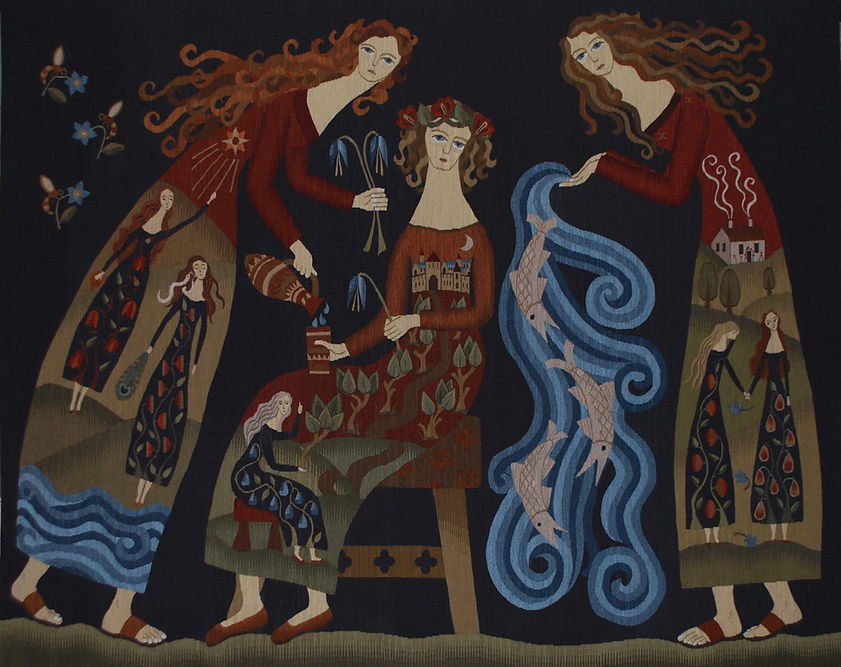This tapestry was inspired by the medieval tapestries I saw during my travels as a Winston Churchill Fellow and the medieval frescos I saw in Bulgaria. Many I saw depicted various Marys weeping over Christ but it occurred to me one would not be caught weeping in front of the murderers of one’s loved one, but as an accuser one would look back with dignity and a spine of oak. The idea had a personal resonance with me and this is the result, I as the weaver, and also a Mary (my middle name) gets to look out through them. The medieval images are known as the Lamentation of Christ, and I have called this The Lamentation as a nod to the original source.
This tapestry was inspired by the medieval tapestries I saw during my travels as a Winston Churchill Fellow and the medieval frescos I saw in Bulgaria. Many I saw depicted various Marys weeping over Christ but it occurred to me one would not be caught weeping in front of the murderers of one’s loved one, but as an accuser one would look back with dignity and a spine of oak. The idea had a personal resonance with me and this is the result, I as the weaver, and also a Mary (my middle name) gets to look out through them. The medieval images are known as the Lamentation of Christ, and I have called this The Lamentation as a nod to the original source.
This tapestry was inspired by the medieval tapestries I saw during my travels as a Winston Churchill Fellow and the medieval frescos I saw in Bulgaria. Many I saw depicted various Marys weeping over Christ but it occurred to me one would not be caught weeping in front of the murderers of one’s loved one, but as an accuser one would look back with dignity and a spine of oak. The idea had a personal resonance with me and this is the result, I as the weaver, and also a Mary (my middle name) gets to look out through them. The medieval images are known as the Lamentation of Christ, and I have called this The Lamentation as a nod to the original source.
Chrissie Freeth
Handwoven Tapestries

The Waterbearers
2022
Cotton warp, hand-dyed woollen weft
2.22m x 1.76m
Any archaeologist will be exceedingly conscious that some people leave their mark on the world and others don't, whether that is an accidental thumb print in wet ceramic, or a giant wall with their name plastered on it, or a piece of craftsmanship hammered into some metal. I have no children, and even if I did it would only take a couple of generations to be forgotten. What is there to say I was ever here? My tapestries? A name in some exhibition catalogue? It is likely that as an artist I am seeking to leave something behind, but is the pursuit of that, if at the expense of living now, worth it?
The girl in the centre of the tapestry is faced with this dilemma - live now and enjoy the abundance of all that life has to offer (as represented by the figure on the right), what does it matter if she were here or not? Or does she choose (as represented by the figure on the left) a small unseen meagre life now, albeit one rich in learning and exploration, in the hope of leaving something behind?
The design of The Waterbearers was heavily influenced by the medieval welsh poetry I was reading at the time and the wider medieval welsh bardic tradition - the making of the poet, the legacy of the poet, the transformation of the poet, the choice between one life and another.



_JPG.jpg)